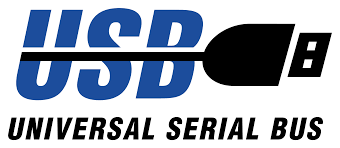
USB CONNECTION GUIDE
We are often asked to explain USB connections when referencing USB hardware terms. This article acts as a reference point we refer customers to.
Connector Type Review

If you are not sure about ports on a device here is a sample image to check.
Take Care
There are some cases where you need to take care with these connector types.
- Apple use Thunderbolt connectors but only the Thunderbolt 3 is the same as USB-C. Be carefull about what you plug into Apple devices.
- Some USB to Type C cables in circulation are faulty and can break the USB C port. Always get from a reputable source.
- Some USB to Type C cables are for specialist uses such as with DJI drone consoles.
- USB ports supply power to devices in many cases. Take care not to overload the port with a device that draws more power than the port can handle. Many devices have a built in self-healing fuse but not all.
- Not all USB types/connectors can be cabled up. Wikipedia article has a table that explains interconnectvity options.
- Connectors with a blue interior are Type 3. You can plug a Type 2 into a Type 3 and it will operate in Type 2 mode. Plugging a Type 3 into a Type 2 will probably not work.
- You can get a USB to parallel printer cable but take care as sometimes if this plugged in when a PC boots it will hang up the PC. The same can happen with USB to serial port cables.
- Some PC's have BIOS options to turn USB ports off. If you have issues check the BIOS has the ports turned on.
- Most PC's when they go to sleep power off the USB ports. Take care if you are tryuing to charge a phone or other device this way.
- Open USB ports are often regarded as security risk and can be locked down with some End Point Protection Software.
USB versions
- USB 1.0 January 1996 Low Speed (1.5 Mbit/s)
- USB 1.1 August 1998 Full Speed (12 Mbit/s)[24]
- USB 2.0 April 2000 High Speed (480 Mbit/s)
- USB 3.0 November 2008 SuperSpeed (5 Gbit/s) Also referred to as USB 3.1 Gen 1 by USB 3.1 standard
- USB 3.1 July 2013 SuperSpeed+ (10 Gbit/s) Also referred to as USB 3.1 Gen 2 by USB 3.1 standard
- USB 3.2 September 2017 SuperSpeed+ (20 Gbit/s) Also referred to as USB 3.1 Gen 3 by USB 3.1 standard
USB Hubs
It is possible to extend most USB ports using a hub. Things to watch out for when you use a hub are:
- USB ports on a monitor can give issues and even if they do work should not be used for a hub.
- Make sure that the power used by the devices you connect to hub does not exceed the rating of the main port. Dont forget to include the power rating of any devices on an adjacent main USB port as these are often powered from the same source.
- Some hubs have mains power to get over the power issue but even then you need to work out the power required. We have seen cases where the unit was just underpowered and devices connected to it would hang up.
- Not all devices work when connected to a hub USB port.
- USB 3 devices only support much shorter cables than USB 2.
Related
- How to read an USB device Identifier
- USB ids have a device class code that explains what family of devices the unit belongs to
- Looking up who a vendor id code belongs to
- Overview of usb connectors in more detail
- Visual Guide to computer cables